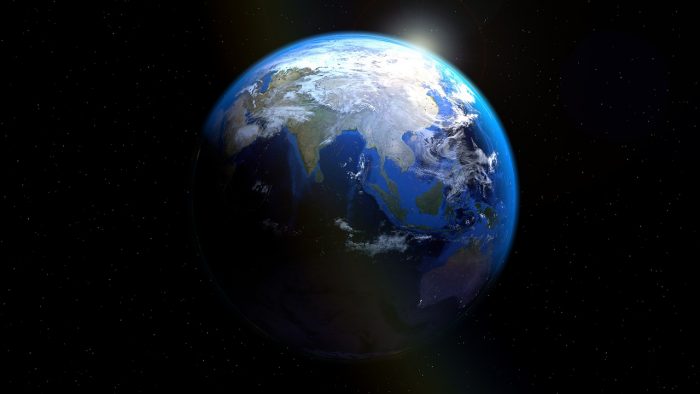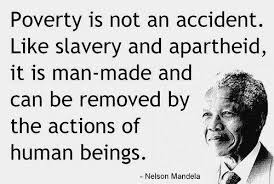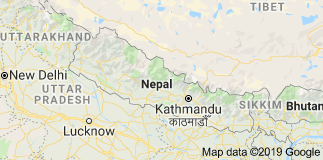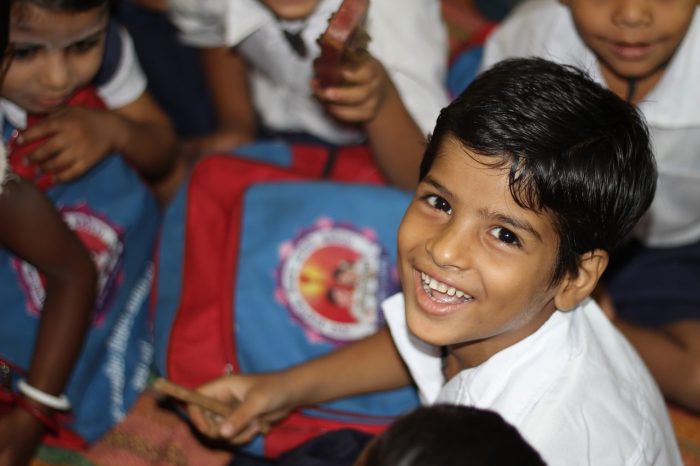

Page Description
Explore the devastating impact
of the Nepal earthquake,
its recovery efforts,
and personal stories from those affected.
Learn about resilience & rebuilding.
Resilience Amid Ruins: Nepal’s Journey After the 2015 Earthquake
On April 25, 2015, Nepal experienced one of the most devastating earthquakes in its history, leaving behind a trail of destruction, heartbreak, and resilience. With a magnitude of 7.8, the earthquake caused immense loss of life, destroyed historic landmarks, and uprooted entire communities.
This page is dedicated to exploring the profound impact of the disaster, the remarkable recovery efforts that followed, and the deeply human stories of survival, solidarity, and hope. Through a combination of compelling narratives and videos, we aim to provide a comprehensive understanding of the earthquake’s effects and the strength of the Nepali people in the face of unimaginable challenges.
Join us as we uncover the lessons learned and the ongoing journey of rebuilding lives and preserving a nation’s spirit.
Veerkracht te Midden van Puin: Nepal’s Reis na de Aardbeving van 2015
Op 25 april 2015 werd Nepal getroffen door een van de meest verwoestende aardbevingen in zijn geschiedenis, met een spoor van vernietiging, verdriet en veerkracht als gevolg. Met een kracht van 7.8 op de schaal van Richter eiste de aardbeving duizenden levens, vernietigde historische bezienswaardigheden en ontwrichtte hele gemeenschappen.
Deze pagina is gewijd aan het verkennen van de ingrijpende impact van de ramp, de opmerkelijke herstelinspanningen die daarop volgden, en de diep menselijke verhalen van overleving, solidariteit en hoop. Aan de hand van meeslepende verhalen en video’s bieden we een uitgebreid inzicht in de gevolgen van de aardbeving en de kracht van het Nepali-volk in het licht van onvoorstelbare uitdagingen.
Sluit je aan bij ons terwijl we de geleerde lessen en de voortdurende reis naar wederopbouw en het behoud van de geest van een natie onthullen.
Why aid money pouring into Nepal after the earthquake is likely to be corruptly diverted.
- Aid is pouring in to Nepal in the wake of the earthquake.
- But in a country where corruption is endemic, will the money go where it is meant to?
Simon Cox investigates.
BBC podcast
Producer: Ben Crighton
Researcher: Aurelia Allen.
Nepal, officieel de Federale Democratische Republiek Nepal
Inwoners: 26.620.809 (2011); 29.384.297 …
Officiële landstaal: Nepalees
Religie: Hindoeïsme 81%, Boeddhisme 9%, Isl..
Oppervlakte: 147.181 km² (2,8% water)
Aardbevingen Nepal 2015 ·
Nepalese roepie


Boy Child Happy Laughing Happiness Smiling Fun
The Nepal earthquake of 2015, also known as the Gorkha earthquake, was a catastrophic earthquake that struck Nepal on April 25, 2015. Here are the key points about the Nepal earthquake of 2015:
Magnitude and epicenter: The earthquake had a moment magnitude (Mw) of 7.8 and its epicenter was near the village of Barpak in the Gorkha district of Nepal, about 80 kilometers northwest of Kathmandu, the capital city.
Casualties and damage: The earthquake resulted in widespread destruction, with thousands of buildings, including historical and cultural landmarks, collapsing or sustaining severe damage. It caused massive loss of life, with an estimated 9,000 people killed, and over 22,000 injured. The earthquake also caused significant damage to infrastructure, including roads, bridges, and communication systems.
Aftershocks: The earthquake was followed by numerous aftershocks, including a major one with a magnitude of 7.3 on May 12, 2015. These aftershocks further compounded the devastation, causing additional loss of life and damage.
Humanitarian response: The international community and various humanitarian organizations responded quickly to the Nepal earthquake, providing emergency aid and assistance in the form of search and rescue teams, medical aid, food, shelter, and other essential supplies. The Nepalese government, along with the support of the international community, led the relief and recovery efforts.
Challenges and recovery: The earthquake presented significant challenges to the relief and recovery efforts, including difficult terrain, remote locations, and logistical constraints. There were also issues related to the coordination and distribution of aid, and the rebuilding of homes, infrastructure, and livelihoods for the affected communities. Despite these challenges, Nepal made progress in the recovery process over time, with efforts focused on reconstruction, rehabilitation, and disaster risk reduction.
Lessons learned: The Nepal earthquake of 2015 highlighted the need for disaster preparedness, building resilient infrastructure, and improving response mechanisms to natural disasters. It also underscored the importance of coordination among national and international agencies, as well as the role of local communities in disaster response and recovery.
Overall, the Nepal earthquake of 2015 was a devastating event that resulted in significant loss of life, damage to infrastructure, and long-term impacts on communities. It brought attention to the importance of disaster preparedness, response, and recovery efforts in vulnerable regions prone to earthquakes and other natural disasters.
1 BBC Living with Nomads 1/3 Nepal
23 nov. 2016
2 People in Nepal
9 nov. 2013
3 – 30 Days In Nepal
23 aug. 2014
4 Village life in Nepal(Parbat Lespar)2017
6 Rural Life in Nepal … Part – 5
7 HISTORY OF NEPAL village live at the foot of MANASLU
16 feb. 2012
8 Nepal, most beautiful places in the world HD नेपाल सुन्दर देश l
22 jul. 2017
9 AWESOME Things to do in Kathmandu, Nepal – Go Local
21 apr. 2017
Cal McKinley – Go Local
Ever wondered what Nepal is like? I take you through a list of my favorite ways to experience the city of Kathmandu, Nepal. Personally one of my favorite cities in Asia just because the culture is so… in-your-face, if that makes sense 😀
Support me on Patreon if ya dig what I’m doing! https://www.patreon.com/calmckinley
Check out my website for more of my travel recommendations! https://golocaltips.com
1. Pashupatinath – A sacred Hindu temple
2. Durbar Square – Who doesn’t want to see a pigeon temple!
3. Swayambhunath Temple – The monkey temple
4. Food yo! – Momo, Pokhara, and Samosas
5. Boudhanath Stupa – One of the most famous religious sites in Nepal
6. Exploring Thamel – Make an effort to wander past all the tourist shops
7. Kopan Monastery – A peaceful site on top of a hill where you can watch monks teaching the principals of Buddhism
8. Nightlife – Check out Jazz Upstairs, Sam’s Pub, and Rum Doodle
9. Asan Bazaar – Another great market where you can pick up just about anything
10. Talk to locals!
10 Nepal Documentary | Living on a Dollar a Day
8 jan. 2016
Our full living on a dollar a day in Nepal documentary. Check out our story and exact breakdown of our expenses: http://thetickettotravel.com/living-o….
Thanks to Sudin KC for all his photography and videography work on this documentary! If you want more of Sudin’s work, follow him on https://www.facebook.com/sudinkcofficial.
Subscribe to our channel and email subscribe on our website http://thetickettotravel.com to keep close tabs on what’s going on.
We filmed from July 17th-August 17th, 2015.
Another Day, Another Dollar documentary was intended not as much as a look into life on a dollar a day, as much as a showcase on how to be content on less, and how life is like for us and others in Nepal.
The documentary was originally divided in 4 parts, uploaded in November 2015, with a total time of about 45 minutes.
The Rules
So we came from the angle of already living here, not starting fresh. Locals living on very little already have a home, basic resources, maybe a bicycle or a motorbike for the family.
Before we embarked on this challenge, we had to set some ground rules, and we will make things as transparent as possible for you.
First up, keep in mind this does not include our visa costs, internet, or rent. Our visa is an expense locals don’t have but we need to pay as foreigners. And we were forced to get Internet ever since YouTube started refusing the submission of VHS tapes for video uploads. Not impressed, YouTube.
Secondly, we chose a high exchange rate to use for the Nepali rupee against the American dollar, so we will be working with 107rps each/day as an average, although for simplicities sake, you can think of 100 rupees as one dollar or 100 cents. We will do it for a whole month with no breaks, meaning our budget as a couple is $60 for the month, or 6420 rps.
This is around 20% less than one person earning minimum wage would make. Over 30 per cent of Nepalese live on less than US$14 per person, per month, according to the national living standards survey conducted in 2010-2011.The average daily income in Nepal is closer to $2 a day. Having said that, if we were to spend the average income during this challenge, we would have no problem paying for our rent as well. Keep in mind, though, many local families already own the family home and don’t have to pay rent.
Our living on a dollar is not only our food. No, that would be too easy. It includes cosmetics, shampoo, soap, laundry detergent, vehicle repairs, and any medicine we might need. We are also using cooking gas, which costs about 8cents a day. Many people especially in the rurals don’t use cooking gas, but use wood fires instead for cooking, which if we were to do also would make it a lot easier to keep in budget. But easy is for losers. Just kidding… Since the documentary, we have been forced to cook on wood, and it is not “easy,” but time consuming. It does save about $4/month doing it that way though. But I’d rather pay for the gas in most cases.
To make it easier to calculate our expenses, we put away lots of our stuff that we bought already to start fresh for the month and not get confused or tempted into using something we already bought before.
As we considered what we need to spend on non-food items, we came to realize that this was more of a challenge than anticipated. Blah.
Our Budget
Not only did we stay in budget, but in 30 days we spent an average of $0.85 per day. As we were going according to the Nepali calendar of 32 days for that month of Saun, though, the money we saved allowed us to treat ourselves to a trip and nice meal for the last 2 days when we went to Sauraha, and Chitwan National Park.
11 How Expensive is Nepal in 2019?
30 jan. 2019
How expensive is Nepal in 2019? Trekking gear, food, accommodation, bus fares, we cover it all in this video.
Subscribe https://goo.gl/Y8ZVar
After spending a solid week in #Kathmandu, we thought it was time to let you know how expensive #Nepal is to visit in 2019. We compare the prices of street food to local restaurants, Airbnb in Nepal to hotels and we investigate the prices of trekking gear and items in the supermarket.
This is our Airbnb host, Raju. The dudes a legend. If you’re going to Kathmandu we definitely recommend staying here. He runs his own tour agency so he can help you with anything you need. Check him out here: https://www.airbnb.com/users/show/626…
We hope you find this useful when you are planning your trip to #Nepaltravel. Feel free to drop us a line in the comments and we’ll be happy to answer any questions that you have.
NEPAL SERIES : http://bit.ly/2OCKeh1
Nepal tourism is on the rise. This playlist covers some of the best places to go in Nepal such as Kathmandu, Chitwan National Park, Nuwakot, Pokhara and trekking in the Annapurna range. This Nepal travel guide series shows you some of the best places to visit and some of the best Nepali food to eat. We spent a total of 3 weeks exploring some of Nepal’s most underrated destinations. Use this playlist to help you plan your own travel to Nepal.
OUR FREE GIFT FOR YOU :
https://www.airbnb.co.in/c/sallyande1…
WHO ARE WE (and why you should care) 路:
We are Sally and Ed a travel couple that make video content. We create Travel Series and Travel Guides all around the world, helping others, inspiring and encouraging people to get out and explore, to travel beyond their comfort zone. Our Travel Guides are Informative, Honest and Straightforward. We share each location and experience as it happens. Nothing is sugar coated. Our Travel is raw, eye opening and sometimes things go wrong. We are always learning and expanding our world view – that’s what we love about travel. Subscribe https://goo.gl/Y8ZVar
HELP US IMPROVE :
We’re always looking to improve. Any feedback for growth you can offer us is much appreciated https://forms.gle/9ayztx8HPR8GQ7xNA
JOIN our #TranslationTeam :
We are trying to build an inclusive and global audience. Any support you can offer in translating our content is helping create a more inclusive Youtube.
Hit the ⚙→ From the drop-down menu, select Subtitles/CC → Add subtitles / CC. You can also hit the … → From the dropdown, select Add translations.
Read more about Translations:
https://support.google.com/youtube/an…
12 Massacre of the royal family of Nepal (Aired: June 2001)
13 The Shocking Massacre of the Nepalese Royal Family (2001)
Gepubliceerd op 10 jan. 2019
Maoist Movement (2001) – The survivors speak for the first time about what really happened that night when Crown Prince Dipendra massacred his family members and all but destroyed the country’s ruling dynasty.
Subscribe to Journeyman here: http://www.youtube.com/subscription_c…
Many Nepalese refuse to believe the murders were the act of one man alone. Conspiracy theories are rife, and the palace massacre is feeding a growing Maoist revolution amongst the poor and dispossessed in the villages of Nepal. Whatever the truth behind the killings, one thing is clear: the Nepalese people have lost their faith in the monarchy, with many now placing their trust in the hands of the Maoists.
For more information, visit https://www.journeyman.tv/film/1192
14 – 2015 Nepal Earthquake – Heart Touching Short Documentary.
24 jun. 2015
15 Revisiting Nepal’s Earthquakes | Documentary
Nepal is blessed with a backdrop of the majestic Himalayas attracting a large number of tourists who enjoy the unique landscapes as well as the hospitality of the Nepali people. However, due to this special geographical feature Nepal is also considered one of the most earthquake-prone regions as the Himalayas are among the most seismically active regions in the world. Nepal faced many earthquakes since the big one of 1934 that took more than 8500 lives, up to the massive tremor of April 2015 with a magnitude of 7.8. Between these 2 big earthquakes, there were many lesser ones that resulted in loss of many lives on lives and damage on properties. This film the illustrates the history of state’s response, relief, recovery and reconstruction in the aftermath of the disasters, in particular the rapid reconstruction of the physical damages caused by the massive earthquakes of April 25 and May 12, 2015 and their aftershocks by The National Reconstruction Authority (NRA) was established for this very purpose. Script: Reny Kshetry, Tsering Choden Narration: Tsering Choden Camera: Chime Tashi Lama, Sangam Thapa Magar Animation: Sahil Pradhan Transcriptions: Sahil Pradhan, Renu Kshetry Editor: Chime Tashi Lama Post Production: Mila Productions Pvt. Ltd. Directed by: Tsering Rhitar Sherpa , Tsering Choden, Renu Kshetry Produced by: National Reconstruction Authority (NRA)
Nepal Earthquake 2015 Full Documentary.| National Geographic | Discovery Channel Episode.
The April 2015 Nepal earthquake (also known as the Gorkha earthquake) killed nearly 9,000 people and injured nearly 22,000. It occurred at 11:56 Nepal Standard Time on 25 April 2015, with a magnitude of 7.8Mw or 8.1Ms and a maximum Mercalli Intensity of VIII The 2015 Gorkha Nepal earthquake caused tremendous damage and loss. To gain valuable lessons from this tragic event, an earthquake damage investigation team was dispatched to Nepal from 1 May 2015 to 7 May 2015. A unique aspect of the earthquake damage investigation is that first-hand earthquake damage data were obtained 6–11 days after the mainshock. To gain a deeper understanding of the observed earthquake damage in Nepal, the paper reviews the seismotectonic setting and regional seismicity in Nepal and analyzes available aftershock data and ground motion data. The earthquake damage observations indicate that the majority of the damaged buildings were stone/brick masonry structures with no seismic detailing, whereas most RC buildings were undamaged. This indicates that adequate structural design is the key to reduce the earthquake risk in Nepal. To share the gathered damage data widely, the collected damage data (geotagged photos and observation comments) are organized using Google Earth and the kmz file is made publicly available.
Nepal Earthquake 2015 Full Documentary.| National Geographic | Discovery Channel Episode.
27 jun. 2015
16 Nepal:The Quake That Shook Everest
Educational
17 Most Dangerous Ways To School | HIMALAYA (India) | Free Documentary
7 sep. 2015
24 – 60 Minutes Australia: Saving the Children
25 Stitched Up in Cambodia | When Having A Baby Means Losing Your Job
Back to menu IMPORTANT CONTENT
Stitched up in Cambodia: When having a baby means losing your job.
30 okt. 2016
More films about human rights: https://rtd.rt.com/tags/human-rights/
Many international brands choose to manufacture their clothes in countries offering cheap labour. Very often, however, these savings are paid for by the most vulnerable groups in society.
In the Cambodian capital, Phnom Penh, most garment workers are women. When a seamstress gets pregnant, she can expect to be fired. There is a law that protects workers’ rights, although few are aware of it. It provides for three months paid maternity leave for workers who have been fully employed for a year. Still, unscrupulous employers are able to circumvent this right by only offering seamstresses three-month renewable contracts. These agreements also make it easier for a factory boss to sack a female worker quickly once her pregnancy becomes known. Trade unions here hold little sway as big businesses are dominant.
Once they are laid off, women stand little chance of returning to their factory jobs even after giving birth. This leaves them with no means of supporting themselves. They become reliant on their relatives for help, and are often reduced to living in poverty. This is why seamstresses try to hide their pregnancies from their employers, continuing to do a physically-demanding job and putting their babies’ health at risk.
However, even though they work long hours, they can still make less than $200 a month – not nearly enough to put away for their future babies’ needs. Meanwhile, the international brands that make vast profits from these goods continue to turn a blind eye to the plight of those who actually make them.
26 Nepal Deadly 2015 Earthquake, 6 Years On: Why Are Survivors Still Displaced? | Insight
27 mei 2021
In April 2015, a massive earthquake hit Nepal. The disaster left more than 9,000 people dead and 22,000 people injured. Some 2.8 million people were also displaced. The 7.8 magnitude earthquake was the biggest earthquake that Nepal had experienced in 80 years – and the worst natural disaster to strike since the 1934 earthquake. The overall damage is estimated to be about 10 billion dollars, nearly half its GDP then.
Six years on, even as the country is rebuilding, the COVID-19 pandemic has now posed a new challenge to the country. The process of reconstruction has now stalled as fears grow over the surge in the number of deaths and infections. How much longer will it take for the country to get back on its feet again?
27 Fireman Interviewed While Building Burns
6 nov. 2012